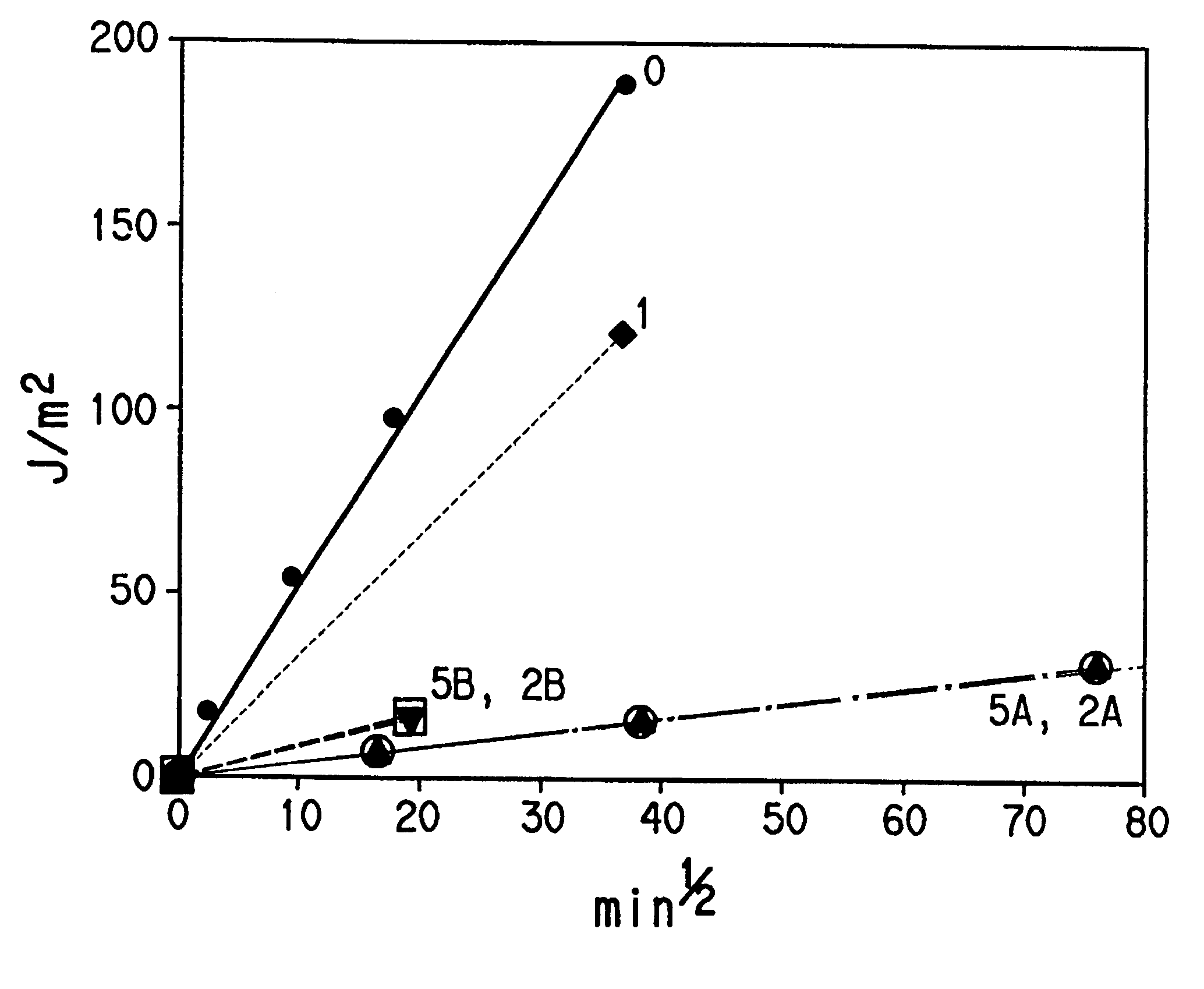Polyurethane fibers and films
a polyurethane and fiber technology, applied in the field of polyurethane fibers and films, can solve the problems of high yarn-to-yarn friction, and high tackiness of polyurethane filaments compared to conventional textile filaments
- Summary
- Abstract
- Description
- Claims
- Application Information
AI Technical Summary
Problems solved by technology
Method used
Image
Examples
example 1
Fiber Tensile Test and Fiber Cyclic Test 300%
Fiber comprising onium modified montmorillonite was prepared by combining a 36% polyurethane solution in DMAc with an 8% DMAc dispersion of montmorillonite clay modified with (N-tallowalkyl)-(bishydroxyethyl)methyl ammonium at proportions to provide dried polymer containing 1 wt % and 2 wt % of the clay additive. The 8% modified clay in DMAc dispersion was prepared by high shear mixing with a homogenizer mixer. The mixture of this dispersion with the polyurethane solution was prepared with low shear paddle mixing followed by circulation of this mix through a gear pump for 2-4 hours.
The solutions described above, plus a separate control solution containing no clay additive, was dry spun into 15 dtex yarns in a conventional apparatus. The solution was metered through spinneret orifices into a spin shaft in which the solution formed filaments as the DMAc solvent evaporated. A flow of heated nitrogen gas was supplied to the shaft to evaporate...
example 2
Different Wt % Clay Samples
The physical properties of solution cast (and dried) polyurethane samples comprising 0, 1, 3, 5, and 12 wt % dodecylammonium montmorillonite were measured using standard elastomeric conditions. Solution cast and dried films (3-7 mil thick) showed that good elastomeric properties were maintained for all samples. The increase in tensile modulus, yield modulus and modulus at 10% elongation demonstrated a reinforcing property of these clays in thick films. Data below in Table 3 was obtained by ASTM Method D-882. (kpsi=1000.times.pounds per square inch)
example 3
Hand Peel Test for Tack Reduction of Film
30 g of polyurethane solution (17.5% solids in DMAc) was separately mixed with a DMAc dispersion containing 2.7 g of Samples 1-7 of the clay listed above (prior to Example 1) using a homogenizer and mixing at moderate speed for 5 min. The calculated clay content on a dry polymer basis was 3% by wt. Sample 0 was a control with no clay added. Films were made by draw knife casting (6-10 mil) onto 5 mil Mylar.RTM. polyethylene terephthalate film. Films were dried 30 min in 60.degree. C. air circulating oven and then overnight at 80.degree. C. in a vacuum oven (20" vacuum).
Film strips of the Mylar.RTM. / polyurethane laminate were cut and placed polyurethane face to face overnight under the pressure of a two pound weight. Hand-held peels as shown in Table 4 gave the following ratings (0-10) with 10 being the most adhered, 0 being no significant bond.
PUM
| Property | Measurement | Unit |
|---|---|---|
| Percent by mass | aaaaa | aaaaa |
| Percent by mass | aaaaa | aaaaa |
| Percent by mass | aaaaa | aaaaa |
Abstract
Description
Claims
Application Information
 Login to View More
Login to View More - R&D
- Intellectual Property
- Life Sciences
- Materials
- Tech Scout
- Unparalleled Data Quality
- Higher Quality Content
- 60% Fewer Hallucinations
Browse by: Latest US Patents, China's latest patents, Technical Efficacy Thesaurus, Application Domain, Technology Topic, Popular Technical Reports.
© 2025 PatSnap. All rights reserved.Legal|Privacy policy|Modern Slavery Act Transparency Statement|Sitemap|About US| Contact US: help@patsnap.com


